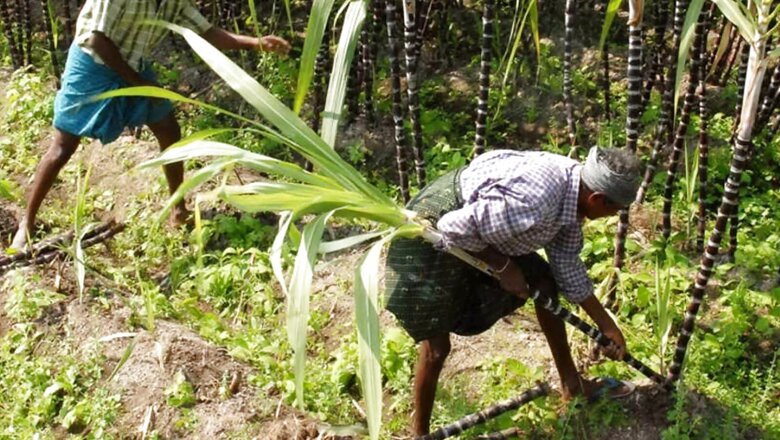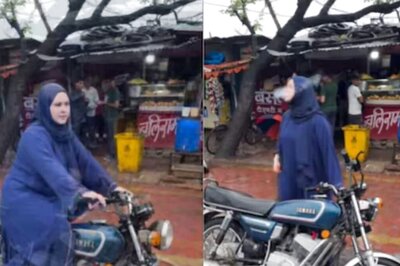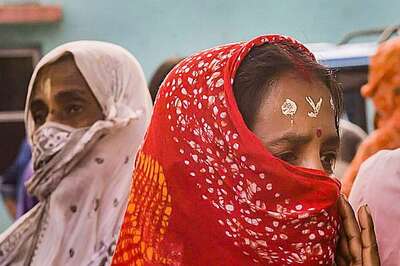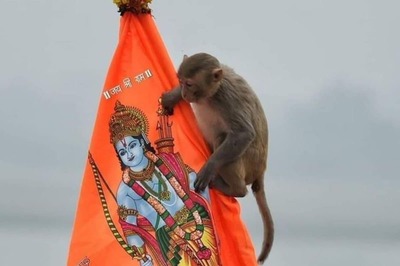
views
The mass mobilisation of the peasantry by the Samyukta Kisan Morcha (SKM) on Sunday in west Uttar Pradesh’s Muzaffarnagar could have discomfited the state government because at the core of the protests in UP lies an issue that the activists do not share with the participating farmers from Punjab, Haryana and other states: The Yogi Adityanath regime’s seeming unwillingness to hike the State Advisory Price (SAP) for sugarcane procurement and sale. Sugarcane farmers make up the bulk of the SKM contingent from UP. In popular perception, sugarcane production is synonymous with the Upper Ganga-Yamuna Doab belt of the west, but this is only partially true. Sugarcane is also grown in Rohilkhand (Moradabad, Bareilly) and the trans-Saryu plains spanning Deoria, Bahraich, Gonda and Faizabad, and Ballia and Varanasi to the east. Sugarcane has proved to be commercially productive so far because it is a perennial crop and lends itself to the manufacture of a host of by-products. In that sense, it cannot be identified with a single region or a particular caste although in agricultural lore, sugarcane and the Jats spring up as the dominant cultivators.
In UP, the SAP alone governs the price structure of sugarcane. It is determined entirely by the state government; every government, regardless of the ruling party or coalition, takes into account the interests of every stakeholder in the sugar economy before determining the SAP which is why farmers often feel short-changed by the establishment as well as the market. The last time the SAP was increased was in October 2017 by Rs 10 per quintal before the crushing season and importantly, before the local body elections. Since then, the SAP stagnated at Rs 315 per quintal. Adityanath, like his predecessor Akhilesh Yadav of the Samajwadi Party (SP), walked the middle path and believed he had humoured the mill owners and the farmers. Indeed, in the recent months as speculation mounted over another SAP hike before the 2022 elections, the private mills petitioned the state government against such a move because they maintained an “adverse” sugar scenario had decreased their cash flow by Rs 30 per quintal compared to the last season.
UP sugarcane farmers were irked the most with the state government after Punjab augmented the SAP by Rs 50 per quintal, fixing the price at Rs 360 a quintal, Rs 45 more than what UP pays. However, the Punjab private sugar mills’ cabal warned they would pay the hike only if the state government subsidised the cost like Haryana does by paying the differential between the Fair and Remunerative Price (FRP) and the SAP as subsidy to the mills. This scenario was anticipated by the UP government that recognises the mills as an influential lobby and does not wish to antagonise them. Therefore, at Sunday’s “mahapanchayat” while the repeal of the three disputatious farm laws was vigorously flagged, the protestors from UP harped more on the less-than-adequate SAP they got.
Sources in the state bureaucracy said the SAP issue was tangled in the quantum of increase: the political executive felt that no matter what amount was handed out, farmers would be “dissatisfied” at the end of it. The Centre, on its part, had nudged the UP dispensation to consider a hike when it increased the FRP to sugarcane growers by Rs 5 per quintal to Rs 290 a quintal for 2021-22 sugar season. The Union government also ruled out an immediate commensurate increase in the sale price of sugar. The FRP applies to Tamil Nadu, Maharashtra and Karnataka that are also major sugarcane producers. The UP cabinet met soon thereafter and the BJP ministers and MPs from the sugar belt had hoped the chief minister would announce a sweetener before the “mahapanchayat”. That didn’t happen.
However, there’s a sense in the BJP and officialdom that a price rise might not sufficiently address the discontent among a large section of the peasantry. “Jab haathi nikal gaya to poonch pakkad ke kya fayida?” (when the elephant is out of reach, what’s the point in trying to catch its tail?) asked a source in the UP administration. An agrarian expert believed that a “token” increase cannot adequately take care of the enhanced energy and chemical and fertiliser costs. Additionally, sugarcane dues accruing to farmers amount to Rs 21, 321 crore, of which Rs 18, 820 crore is for the cane supplied in the current season (ending September) and the remaining Rs 2,501 crore hangs from the previous years. One reason why the sugarcane dues were so high despite record exports and a significant uptick in the diversion towards ethanol manufacture was that the SAP remained stagnant since 2017.
It’s not as though the Adityanath regime did not make corrections for farmers periodically. The CM promised to withdraw cases against farmers for stubble burning and not snap power connections, both of which caused anger in the countryside. During the first Covid-19 hit, the government unveiled a Rs 900 crore subsidy on power consumption by private tube-wells on farms to help compensate for the income losses because of the pandemic. In 2019, the UP Electricity Regulatory Commission had raised fixed charges on rural unmetered private tube-wells and pump sets from Rs 150/BHP (Brake HorsePower) per month to Rs 170/BHP, while energy charges for metered connections went up from Rs 1.75 to Rs 2.25 per unit and fixed charges from Rs 60/BHP to Rs 90/BHP.
But are these good enough political counters to the well of restiveness that the “mahapanchayat” sought to tap in the countryside? Ostensibly “non-political”– notably no politician was present on the dais — it is learnt that the SP and its ally, the Rashtriya Lok Dal (RLD) put their weight behind the event and mobilised the crowds from UP. The mugs of Akhilesh Yadav and Jayant Chaudhary, the SP and RLD presidents, were conspicuous on the posters plastered all over Muzaffarnagar.
The BJP has projected the Jats as a ‘dominant’ class who cannot be on the side of the marginal and small farmers, a large constituency across the state. On the other hand, the SKM, backed by the SP-RLD, are increasingly speaking of the farmer as a generic class “exploited” by the ruling order. The narrative that sells will determine voting trends and preferences in the impending polls.
Radhika Ramaseshan is a senior journalist. She was the political editor at The Telegraph. The views expressed in this article are those of the author and do not represent the stand of this publication.
Read all the Latest News, Breaking News and Assembly Elections Live Updates here.

















Comments
0 comment